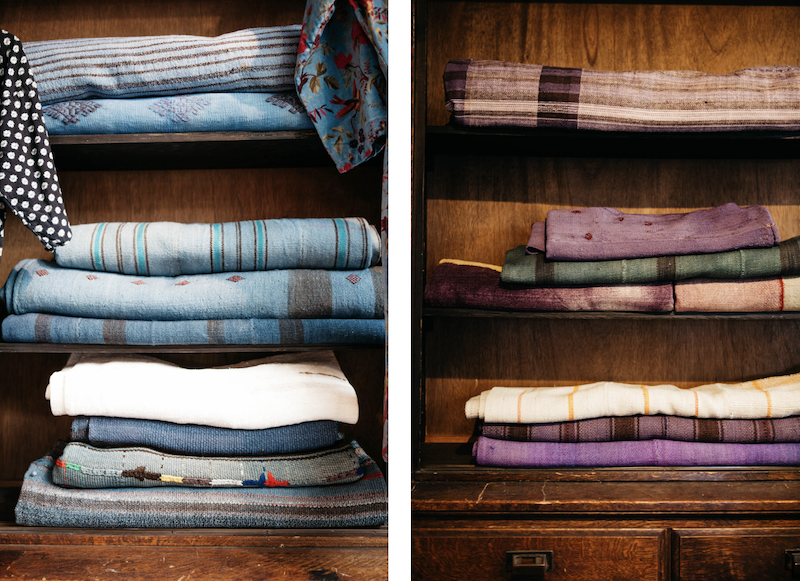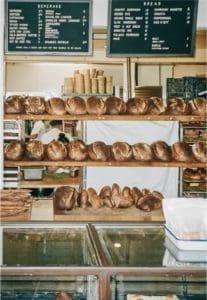
Conversations: Engin Demirkol
The entire process from the initial phase of recovery to the final one of delivery is a sheer joy to me. It is my work, and it is my life.
This week, we’re stepping into the incredible fabric archive and inspiring world of our friend Engin Demirkol. Based in Istanbul, Engin is a true expert in the world of traditional Anatolian kilims. For over 35 years, she has been steeped in the world of vintage textiles, beginning as a collector and dealer before her business organically evolved into the creation of its own unique rugs and pillows.
Working alongside a collective of women weavers and artisans in Turkey, she offers wholly original styles created from repairing and preserving traditional fabrics, often reinterpreting them in new ways with respect to the history, artistry, and cultural significance behind the palette, fabrics, and techniques inherent to each one-of-a-kind piece.
Beyond her expertise, we’re deeply inspired by her dedication to her work, and the ethos behind her preservation of a lineage of craft and identity that goes beyond beauty. As she puts it, “it is my work, and it is my life.”
We’re honored to have a selection of Engin’s one-of-a-kind pieces available for sale at Gjusta Goods…and to share this interview with her and glimpses of her Istanbul showroom.

Can you share more about your own background — where you grew up, your family, hobbies, what led you to what you are doing today?
We have been collecting, repairing, and taking care of old Anatolian kilims for the last 35 years in order to make them available for their new owners. The diversity of these kilims and the richness in their design are unbelievable. It is a great luxury for anyone to be in love with what earns him a living, and that is so true for us.
It goes beyond beauty — the cultural rapport we develop with our sources is a great treasure for us. And so is the final phase of our effort, which is making these old kilims that we repair and treat available to our clients. That is a very enriching life experience for us, and we love it. The entire process from the initial phase of recovery to the final one of delivery is a sheer joy to me. It is my work, and it is my life.

I love how you take old faded kilims and reuse them for pillows — do you have any other ways that you like to use them?
There is a blessing in every curse. The 2008 financial crisis hit us very hard, like it did the entire world and our customer number plummeted. And yet, that time provided me with the opportunity to work some pieces I had collected over the years and come up with designs of my own…which were met with extremely positive support. Encouraged by the significant demand for these design items, I started doing the same for rugs that I put together and sewed by hand.


When you make custom rugs for clients how do the new designs come together?
I’m frequently asked how I pick and choose the pieces appropriate for a specific order from among the huge stock we have piled over the years. My memory works with surprising precision, especially when you work religiously and form almost an emotional attachment to every piece that you love in your stock.


From your perspective, can you share more about the history and significance of Kilim rugs in Turkish culture?Anatolian kilims’ diversity of color and harmony teaches you how to use colors — in fact, Gaugin once told young painters to focus on kilims to use colors “properly.”
Kilims in Anatolia are either produced by villagers as single units in vertical weaving looms, or they are woven as long and narrow pieces and then put together by nomads. Every region has its own specific tones of color, kilim design, and even types of wool.
Weaving is very personal; it is in line with the regional designs but expressed purely as a personal preference with respect to the theme that the creator intends to convey.
Root color is obtained from natural sources like plants, roots, and bugs, and these sources naturally are different in different regions. That enables us so-called experts to know or have an educated guess as to which region the piece is from, but each piece, in the final analysis, is unique and tells a different story. And then you have kilims woven by women who relocate to different regions for reasons like a marriage or some other reason, and these happen to be of a hybrid nature, some combination of features coming from both regions.

Can you share more about how you have sourced over the years, and do you have a personal favorite rug? Are there rugs that you will never be able to sell?
When I first started this business, I couldn’t part with certain kilims I loved due to the emotional bond I formed with them. I simply did not sell them. Over time, it’s become more of a pleasure for me to find people who appreciate these pieces like I do, and to find joy in the kilims’ presence in others’ lives and homes.
Apart from collecting vintage rugs, what other vintage items do you like collecting and why?
I also collect antique doors, furniture, porcelain, copper ornament, and pots. My greatest “find” has been my husband Ahmet, who happens to indulge in the very same efforts and supports me unconditionally. I work seven days a week — while I have loves like traveling, swimming in the summer, skiing in the winter, and cooking, my greatest hobby is my work.

Do you have a favorite Turkish artist?
My favorite Turkish painter is Fikret Mualla. In Mualla’s paintings, the emphasis is not the color of the objects but about the color of the painting itself. Objects are merely vehicles of displaying those colors.
Shop Engin’s collection of rugs at Gjusta Goods, available in-store and online.
Subscribe To Our Newsletter
Receive updates on new menu items, recipes, stories, and updates from the Gjelina Group.




















